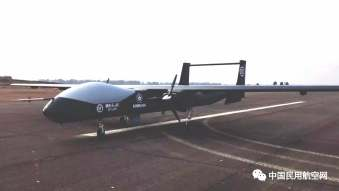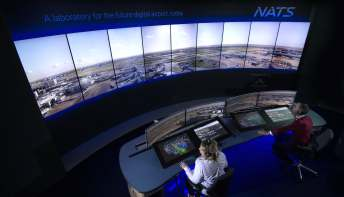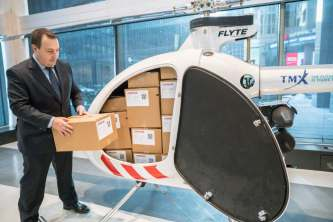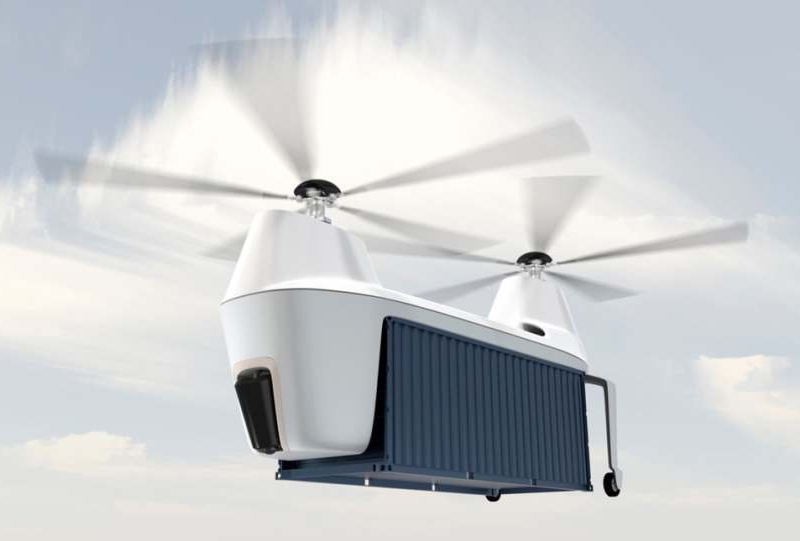TECHNOLOGY: Air cargo industry's bridge to the future
According to the UNESCO Institute for Statistics, global spending on research & development (R&D) has reached a record high of nearly $1.7 trillion. of the figure, just 10 countries account for 80% of the spending, with China and the United States dominating the share, focused mainly on science and technology.
 The Coronavirus pandemic brought about enormous unprecedented challenges and uncertainties with profound impact on people’s lives, industries and economies across the world that would take years, if not decades, to recover from.
The Coronavirus pandemic brought about enormous unprecedented challenges and uncertainties with profound impact on people’s lives, industries and economies across the world that would take years, if not decades, to recover from.
Buried in mounting debts and faced with tight resources amid a global meltdown in economic activities, governments and various industries have turned their sights on investing more in new technologies to push for recovery.
According to the UNESCO Institute for Statistics, global spending on research & development (R&D) has reached a record high of nearly $1.7 trillion. Of the figure, just 10 countries account for 80% of the spending, with China and the United States dominating the share, focused mainly on science and technology.
The US continues to lead on tech investment raising as much as $148.75 billion, nearly 50 percent of the global total and more than double that of China, over the last four years, according to Tech Nation, a UK network for tech entrepreneurs.
Globally, e-Commerce giant Amazon, which has expanded its business clout to logistics and air freight, is the top private spender on R&D at $22.6 billion in 2018. Alphabet, Volkswagen, Samsung and Intel rounded up the top 5.
 China, however, is fast catching up, reportedly spending as much as $322 billion on R&D for science and technology in 2019. The country is aggressively competing with the US and others in selling their tech products, including building and deploying the 5G or the fifth generation of wireless technology, which would revolutionize how we communicate and do business.
China, however, is fast catching up, reportedly spending as much as $322 billion on R&D for science and technology in 2019. The country is aggressively competing with the US and others in selling their tech products, including building and deploying the 5G or the fifth generation of wireless technology, which would revolutionize how we communicate and do business.
Accelerating digitalization
The new normal requires people to observe social distancing in public spaces, and contactless transactions. This means accelerating digitalization and the use of new technologies in various industries to protect people from getting infected with the virus.
Deloitte, one of the biggest auditing, financial and accounting firms in the world, said the tech industry has helped many people and businesses stay connected during the pandemic and this would have a long-term impact on our future and the way industries do business.
Deloitte forecasts the global economic recovery to begin in late 2021 with uncertainties still looming in the horizon.
 “The virus follows a wave pattern, abating and then peaking again in multiple global geographies. Economic recovery begins late 2021. Recovery slow in early 2022 and speeds up by second half of 2022. Chinese economy rebounds slowly. Deep and prolonged recession in the West affects supply chains and consumer demand. Fiscal stimulus limits business failures, but does not boost spending,” Deloitte said.
“The virus follows a wave pattern, abating and then peaking again in multiple global geographies. Economic recovery begins late 2021. Recovery slow in early 2022 and speeds up by second half of 2022. Chinese economy rebounds slowly. Deep and prolonged recession in the West affects supply chains and consumer demand. Fiscal stimulus limits business failures, but does not boost spending,” Deloitte said.
Kevin Smith, Head of KPMG Private Enterprise in EMA, said we’re now seeing the acceleration on digital transformation, especially the use of artificial intelligence (AI) and machine learning, due to the pandemic.
“Despite the challenges that the entire world has faced over the past few months, one of the positive outcomes of COVID-19 that people were talking about was the acceleration of digital transformation, especially artificial intelligence and machine learning …. these technologies will, in fact, be instrumental in collecting and analyzing the enormous sets of data that will be vital to our post COVID-19 recovery,” Smith said in a recent industry webcast which KPMG, a global network of independent member firms offering audit, tax and advisory services, organized.
Aviation still in slump as cargo rises
Aviation remains in a “coma” following the abrupt cessation of travel worldwide to prevent the spread of COVID-19. No one can say with certainly when this once vibrant industry will return to normal with the vast majority of people still reluctant to fly for economic and health reasons.
 The International Air Transport Association (IATA) has since called on governments to work together to urgently find ways to re-establish global connectivity by re-opening borders and keeping relief measures to sustain airlines during the COVID-19 crisis.
The International Air Transport Association (IATA) has since called on governments to work together to urgently find ways to re-establish global connectivity by re-opening borders and keeping relief measures to sustain airlines during the COVID-19 crisis.
“Many airlines will not have the financial means to survive an indefinite shutdown that, for many, already exceeds a half-year. In these extraordinary times, governments will need to continue with financial and other relief measures to the greatest extent possible. It’s a solid investment in the recovery because each airline job saved supports 24 in the broader economy. And a functioning airline industry will be a critical enabler for economies to regain their full power,” said Alexandre de Juniac, IATA’s Director General and CEO.
In July, global passenger traffic fell by nearly 80 percent compared to July 2019 levels despite some airports and airlines resuming operations.
The air cargo industry, on the other hand, instantly became the star of the show hauling across continents vital medical supplies and equipment, including urgently needed necessities such as food and medicines, in huge quantities.
Demand for more freighters prompted many airlines to convert passenger aircraft to so-called all-cargo flights to increase capacity. The loss of belly-hold capacity from commercial flights, however, remains a big blow to the air freight industry.
IATA said cargo volumes remain low compared to the pre-Covid era but not as much as that of passenger traffic. With global economic activities slowly picking up based on improving manufacturing output and new export orders data, air freight is up for more business.
“Economic indicators are improving, but we have not yet seen that fully reflected in growing air cargo shipments. That said, air cargo is much stronger than the passenger side of the business. And one of our biggest challenges remains accommodating demand with severely reduced capacity. If borders remain closed, travel curtailed and passenger fleets grounded, the ability of air cargo to keep the global economy moving will be challenged,” said de Juniac.
The rise of AI, APIs and other new technologies
Long before COVID-19 struck, the air cargo industry took on steps to transition from outdated and complicated legacy systems to the more efficient tech-driven and paperless systems.
The pandemic though forced the industry to accelerate streamlining its operations, reduce costs and optimize its efficiency by using more customized interfaces used for networking planning, flight operations, revenue accounting, and other processes.
Major air cargo carriers have since switched to tech-driven systems and beefed up investment on new technologies which are far more efficient that the traditional way apart from improving transparency in the supply-chain operations.
These include using AI, APIs, GPS tracking solutions and other new technologies used in promoting their services, providing customer service, tracking, booking shipments online or making payments.
The use of cloud systems is also in high demand this year and so are videoconferencing and remote collaboration to keep staff productive and business as well despite the lockdowns.
According to IATA, the e-AWB is now used for 2 out of 3 shipments, signaling that the industry is ready to take on digitalization to the next level and go beyond EDI and messaging technologies.
Currently, IATA said the e-AWB network covers 63% of worldwide trade (the e-AWB network corresponds to locations where the legal framework has been created to allow an electronic contract of carriage) and their goal is to have a 100% penetration by 2022.
China’s unmanned cargo planes
With more than 1.4 billion people, China has the world’s biggest domestic market and consumer demands are increasing. Outside of China, the Chinese population is also rising in different parts of the world.
Following the pandemic, China had pledged to keep strengthening its domestic market while luring more foreign investors. The seamless movement of goods is an important aspect to the success of this initiative and the country has vowed to improve its air, rail, land and sea transport systems.
Last year, China’s biggest air cargo company, SF Express, fourth largest globally after FedEx, UPS and DHL, signed a memorandum of understanding with Searidge Technologies, among other firms, to set up digital remote air traffic control towers in China.
Pat Urbanek, an IT expert and executive at the Canadian firm Searidge Technologies which specializes on remote digital tower solutions with presence in 25 countries, said their digital remote tower project in China is in line with SF’s plan to use plane-size cargo drones capable of carrying more than 1.5 tons, mainly parcels for now.
“SF Express is the fourth largest cargo and freight company in the world behind FedEx, UPS and DHL. Their plan is to be able to provide parcel delivery within 36 hours all over China,” Urbanek told Air Cargo Update.
In August, SF successfully operated its unmanned cargo plane, the FH-98, cruising at fast speed. Its success ushers the beginning of a new era in China whereby autonomous cargo planes will be used to fly domestic goods.
SF’s subsidiary, Feng Bird Airlines, will operate the large-scale drones for cargo which is mainly targeting to serve remote areas across China.
Urbanek said the future looks bright with technology working to enhance the old systems for the greater good of humanity.


